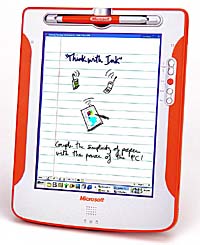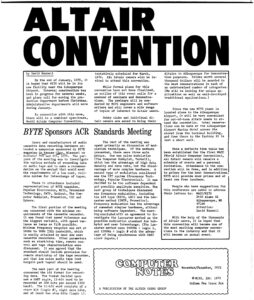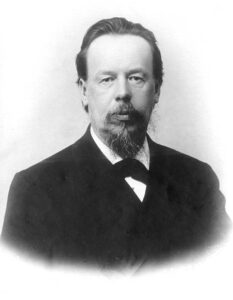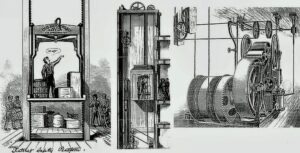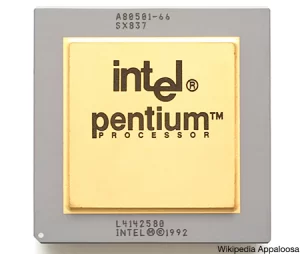Archive for 2024
Bill Gates Announces First Tablet PCs
A little over 4 months after announcing that Tablet PCs would be the future, in his keynote at the 2001 Windows Hardware and Engineering Conference (WinHEC) Bill Gates announces Tablet PC support from Acer, Compaq, Fujitsu, Sony and Toshiba. Microsoft’s Tablet PC initiative made a lot of noise and had hardware manufacturers salivating at the thought of a new category of computers to sell after the post Y2k downturn in sales, but for a variety of factors never gained mainstream acceptance. It was not until Apple introduced the iPad in 2010 that mainstream tablet computing actually became a reality.
Melissa Unleashes
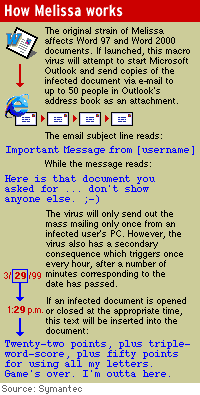
The first e-mail virus to cause widespread damage and one of the fastest spreading viruses in history, Melissa was released into the wild on an early Friday morning and within three days would infect between 100,000 and 250,000 computers around the world. Targeting Microsoft Word and Outlook, the virus did not directly cause any damage, but the sheer volume of e-mail that it generated crashed many corporate *cough* Microsoft *cough* e-mail servers.
The malware first showed up on the alt.sex usenet group and was apparently named by its creator, David L. Smith, after an exotic dancer. He was arrested a few days later on April 1st, 1999 and accused of causing $80 million worth of damages. He pleaded guilty and was sentenced to 20 months in prison and a $5,000 fine.
First Personal Computer Convention
The First Annual World Altair Computer Convention is held in Albuquerque, New Mexico. The Altair 8800 is considered the world’s first popular “microcomputer”, which essentially was the first popular personal computer. Created by MITS which was headquartered in Albuquerque, this Altair convention is also known for being the world’s first major microcomputer or personal computer convention. Over 700 people from 46 states and 7 countries attended. The next day at the opening address, a young Bill Gates gives a talk about software piracy. Bill Gates and Paul Allen had moved to Albuquerque about a year earlier to write the BASIC programming language for the Altair, founding Microsoft.
Twister First Movie on DVD

The movie Twister becomes the first feature film released on DVD in the United States. I can tell you from experience that it sounds really good in surround sound! Make sure you have a good subwoofer!
Space Shuttle Columbia Delivered
The first space flight capable Space Shuttle, Columbia, is delivered to the John F. Kennedy Space Center. Columbia was the second orbiter built, but its predecessor Enterprise was built primarily as an early testing prototype and without engines and functional heat shielding was not capable of space flight. Columbia was set to launch in late 1979 but due to various problems, did not launch until April 12, 1981. Columbia was lost on February 1, 2003 upon re-entry due to damage to the heat shield on its wing from an impact from falling foam insulation.
Mac OS X is Born

Mac OS X 10.0, the first public version of Mac OS X, is released. The code name for this release was Cheetah, although Apple did not start using the code names for marketing purposes until Mac OS X 10.3, Jaguar.
Popov’s First Public Wireless Transmission
Russian physicist Aleksandr S. Popov sends the words “Heinrich Hertz” over morse code through wireless telegraphy between two buildings at St. Petersburg University. While controversy exists over who technically invented the radio (Popov or Guglielmo Marconi), Popov’s transmission may have been the first recorded wireless audio transmission in history. Popov had no interest in patenting his creations and since Marconi commercialized his own technology, Marconi is considered the father of the radio in the world outside of Russia.
Mir Falls From the Sky

The Russian space station Mir burns up in the Earth’s atmosphere after fifteen years in orbit. The debris that isn’t burned up falls safely into the Pacific ocean between Chile and New Zealand, in a region from which governments had routed planes and ships away. The station, which was launched in 1986, far exceeded its intended lifespan of five years.
The First Commercial Elevator
The world’s first commercial “safety elevator” goes into service at Haughwout Department Store in New York City. Created and installed by Elisha Otis it was powered by a steam engine which moved at a rate of 40 feet per minute and took 15 seconds to move between floors. By the 1870’s there were 2000 Otis elevators in service. The creation of a practical and safe elevator was a major step towards the development of modern skyscrapers since it made buildings with more than a few floors accessible to the general public. Ironically, this first elevator was shut down after 3 years because not enough customers wanted to use it!
First Pentiums Shipped
Intel ships the first Pentium processors, debuting with speeds of 60 and 66 MHz. With 3.1 million transistors and 4 GB of addressable memory, it was a significant upgrade from the 80486 line of processors. Also significant was the fact that Intel chose to brand this fifth generation of processors with a name that could be trademarked, departing from the 286, 386, and 486 sequence it had been using for their 8086 line of processors. The main reason for this was that AMD, who had been a second source manufacturer of x86 processors, reverse engineered Intel’s 386 processor after Intel tried to end their second source arrangement. AMD claimed that they had the legal right to manufacture x86 processors due to the contract it had with Intel. This started a long running legal feud between the two companies that lasted until 1995. Among various lawsuits, AMD successfully defended a trademark infringement claim brought about by Intel over the 386 name. The court ruled in March of 1991 that the term 386 was generic and could not be trademarked. Therefore Intel went to a marketing firm to come up with the name Pentium so it could differentiate itself from AMD’s eventual 586 clone.

